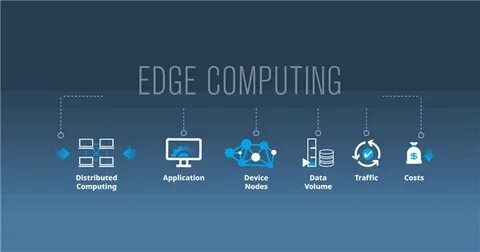With today’s high speed, world supply chains are becoming increasingly complex. Everything is linked and flows at lightning speed, from factories to outlets to the end consumers.
Has it been cited that firms feel edge computing will make their supply chains more efficient and quicker?
This is because edge computing reduces the distance between computing power and where the action occurs. Rather than being dependent on a single distant computer, it leverages nearby devices to make instantaneous decisions.
Such speed enables firms to react to difficulties or shifts in the supply chain more rapidly than possible.
So, how can supply chains be made better and faster with edge computing? Let’s continue to find out.
Speed at the Core of Supply Chains
Speed is the measure of success for a supply chain. Edge computing minimizes delays by shortening the time it takes for devices to receive and transmit data. In a supply chain, every second matters. Latency in data transmission tends to result in incorrect updates and wasted resources.
How Edge Slices Time in Day-to-Day Operations
With edge computing, scanner sensors, and device data are processed locally. This provides managers with updates in real time. For instance, a factory can identify machine failures immediately. A warehouse can monitor stock movement in real time. Delivery routes can be optimized in real time as traffic conditions change.
- Real-time alerts avoid late shipments.
- Employees respond fast to unexpected changes.
- Customers receive precise delivery times.
Improved Visibility Throughout All Phases
Supply chains are long processes from raw material procurement to delivery. It is difficult to track every step. Without visibility, businesses usually experience lost products and increased expenses.
Edge computing enhances visibility by providing transparent real-time insights. Managers have access to exact quantities of stock, the whereabouts of goods, and even the status of items, like humidity or temperature for sensitive goods.
- Transparent tracking of goods avoids stockouts.
- Improved forecasts cut unnecessary inventory.
- Condition monitoring keeps products safe.
Improved Security for Private Data
Supply chain data security is a top priority. Sensitive data like delivery history and product information can be vulnerable to cyber attacks. Edge computing secures data by processing it nearer to the source rather than sending everything to the cloud.
How Edge Secures Supply Chain Data
When information is processed locally, it is less vulnerable to hackers. Devices can sift and encrypt data before uploading only the required components to central servers, reducing the likelihood of mass data breaches.
- Local data processing minimizes risk.
- Sensitive information remains inside the firm.
- Encryption safeguards data in transit.
Smart Use of Resources
Supply chain effectiveness is not only about speed. It also hinges upon resource efficiency. Edge computing assists in reducing waste and conserving energy.
Reducing Waste with Smarter Insights
Machine and truck real-time data indicate where resources are wasted. For instance, if a truck is taking longer routes, the system can raise an alert. If equipment consumes excessive power, edge solutions can recommend remedies.
- Effective routing reduces fuel consumption.
- Machine health checks lower downtime.
- Energy consumption is monitored and optimized.
This intelligent utilization of resources saves money and maintains an environmentally friendly supply chain.
Reliable Operations, Even in Far-Off Places
Certain segments of the supply chain function in areas with poor internet. Agricultural factories and transportation paths tend to be without robust cloud networks. That is where edge computing excels.
Edge devices function even under low connectivity since they handle data locally. Work doesn’t stop when the internet is off. Updates are stored and synchronized when the network resumes.
- Local processing maintains work continuity.
- Less reliance on uninterrupted internet.
- Smoother updates when the connection is restored.
Real-Time Collaboration Among Teams
Supply chains require coordination by numerous teams. Miscommunication causes mistakes. Edge computing enables real-time collaboration by allowing everyone access to the same current data.
How Edge Enhances Teamwork
When processing occurs at the edge, the workers in various areas view the exact figures immediately. Warehouse personnel are aware of what is in inventory. Drivers are aware of which roads to take. Managers can authorize adjustments expeditiously.
- Shared access enhances teamwork.
- More rapid decisions minimize bottlenecks.
- Smooth rollouts keep everybody on the same page.
Future of Supply Chain with Edge
Edge computing is not only a tool for tomorrow; it is also the premise for future supply chains. As companies expand, they must manage more data from sensors and intelligent devices. Edge computing enables data management that is simple and quick.
Businesses that implement edge computing today will remain ahead of the curve. They will experience quicker updates, secure data, and improved customer support. More industries are already shifting to the edge, and supply chains have no choice but to follow.
- Early adoption creates a long-term advantage.
- Faster insights provide a competitive advantage.
- Resilient systems lay the ground for growth.
The future is with supply chains that are fast, secure, and intelligent. Edge computing enables it to happen.
The Last Words
Efficiency in the supply chain is the foundation of contemporary enterprise. Edge computing enhances this efficiency by reducing latency, enhancing visibility, safeguarding data, conserving resources, and facilitating collaboration.
It makes smooth functioning possible even in distant places. It also forms a robust foundation for potential growth in the future. Companies that go the edge way today will minimize waste/costs and impress customers.
The strength of edge is that it narrows the gap between data and where it is needed. In the quicker world of supply chains, to be close to the edge is to be ahead of the game.

